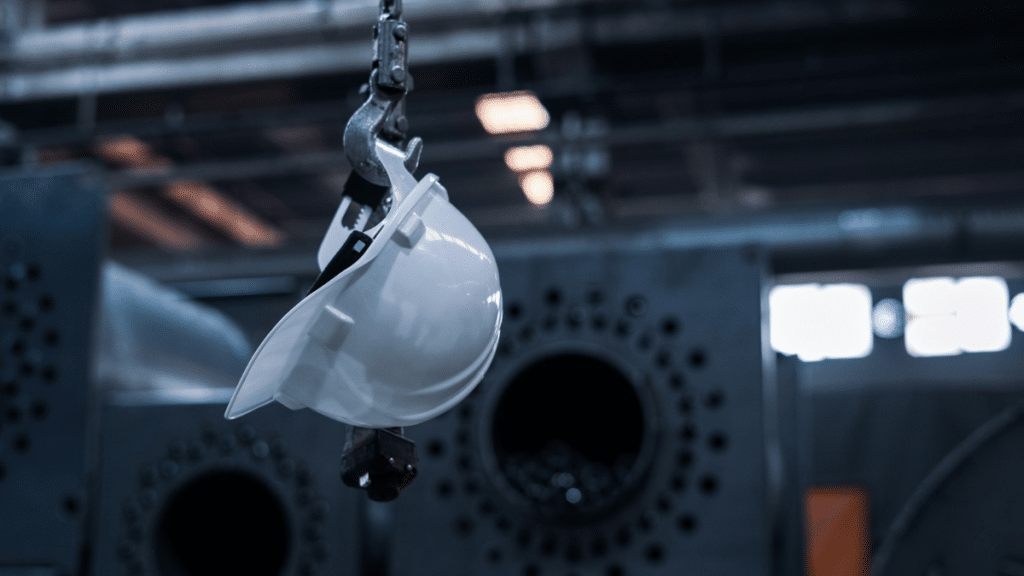Workplace safety relies on long-term planning to build the right teams that are dedicated to following important rules and procedures. With the right practices in place, you can protect your employees from workplace safety hazards today and build a more reliable team for the future. Prioritizing on-the-job safety can improve productivity and lower turnover to keep operations running smoothly and support long-term business success.
The Connection Between Workplace Safety and Workforce Sustainability
A safe workplace can become a stable workplace. Companies that prioritize safety can reduce injuries and lower turnover. Safety practices and enforcement allow workers to feel safe, which can make them want to stay with the company longer and build experience to strengthen the business.
High turnover can increase costs for a business. Constantly replacing employees slows productivity and leads to more training expenses. When skilled workers leave, companies also face knowledge gaps that can take years to fill. This lowers efficiency and causes higher operational risks.
That’s why investing in employee well-being pays off. If your business focuses on safety and workplace development, there’s a good chance you’ll see fewer injuries, lower absenteeism, and higher engagement. Training employees properly from the start improves safety and prepares them for evolving job roles, helping your company reduce skill shortages.
Addressing Immediate Workplace Safety Challenges
Every industry has safety risks, although the risks may look different between sectors. For example, manufacturing workers face machinery hazards, and construction crews deal with falls and heavy equipment. On the other end of the spectrum, office employees risk repetitive strain injuries. No workplace is immune.
Address safety challenges in your workplace by being proactive. Regular inspections help spot hazards before they cause harm, and clear safety procedures ensure employees know how to handle dangerous situations. If you need to provide personal protective equipment, be sure to enforce its use to prevent injuries.
Your leadership team plays a significant role here, essentially defining your company’s safety culture. When managers take safety seriously, employees do too. Managers who can recognize, reward, and model safe behavior encourage others to follow suit. Recognizing safe behavior encourages others to follow suit.
Be aware that hiring seasonal and temporary employees comes with additional risks. They may lack full training and understanding of workplace rules. However, short-term employee safety is just as important as safety for long-term staff. Hands-on demonstrations help them learn quickly and pair them with experienced workers who model proper safety practices.
Overcoming Workforce Planning Complications
Failing to address workforce planning obstacles early can disrupt your business operations. Long-term planning is necessary to find skilled workers quickly when you need to replace retiring or promoted employees.
That means anticipating future workforce needs, which can be quite a task without a plan. Industry trend data can help you predict the skills that will be in demand in the next several months or years, allowing you to figure out what type of people you’ll need to start looking for.
Hiring strategies should focus on both immediate staffing needs and long-term talent development. Apprenticeship programs and partnerships with trade schools can build a steady pipeline of skilled workers.
You’ll also need to plan for knowledge transfer, which happens when experienced employees leave and take their years of expertise with them. Prevent this by implementing mentorship programs, documenting critical processes for future employees to know, and encouraging cross-training for current staff. This can create a smooth transition when senior employees retire.
Strategies for Long-Term Workforce Stability
A stable workforce learns continuously to be successful. Employees who gain new skills are more prepared for current and future challenges. Businesses can offer on-the-job training, tuition assistance, or mentorship programs to support long-term growth.
Also, pay alone won’t keep top talent. Employees want to see strong benefits, clear career paths, and workplace flexibility to feel valued. Many also look for a workplace culture that values input and recognizes contributions.
A sustainable workforce is also one that’s diverse and inclusive. Teams with a mix of backgrounds and experiences can bring varied perspectives into discussions and strategies. You can expand your talent pool by broadening hiring efforts beyond traditional sources. Instead of relying on job boards, you can partner with trade schools, apprenticeship programs, and community organizations to reach skilled candidates who might not apply through standard channels.
The Future of Workplace Safety and Workforce Development
Workplace safety and workforce development will continue to evolve as industries change. Shifting job demands and new safety regulations will shape how businesses protect employees and build strong teams. But gaining a competitive edge is possible if you’re open to adapting early on.
Automation and AI will likely take on more of a role in reducing workplace hazards over the coming years. These technologies can take over repetitive or dangerous tasks, like heavy lifting in warehouses, manufacturing precision cutting, and lab hazardous material handling. Wearable safety devices with real-time monitoring features could also make it easier to prevent injuries.
Consider also getting ahead of changes in workplace development. As skill requirements change, companies should move their focus from hiring new people to cross-training and upskilling current employees.
Building a Safer, Stronger Workforce for the Future
Keeping employees safe today lays the foundation for a stable workforce tomorrow. Investing in immediate safety and long-term growth gives companies an edge by creating a workplace where people want to stay and succeed. Prioritizing detailed training and having a strong hiring plan can lead to lower turnover and higher productivity. Take action now to reinforce your team and level up your business.
